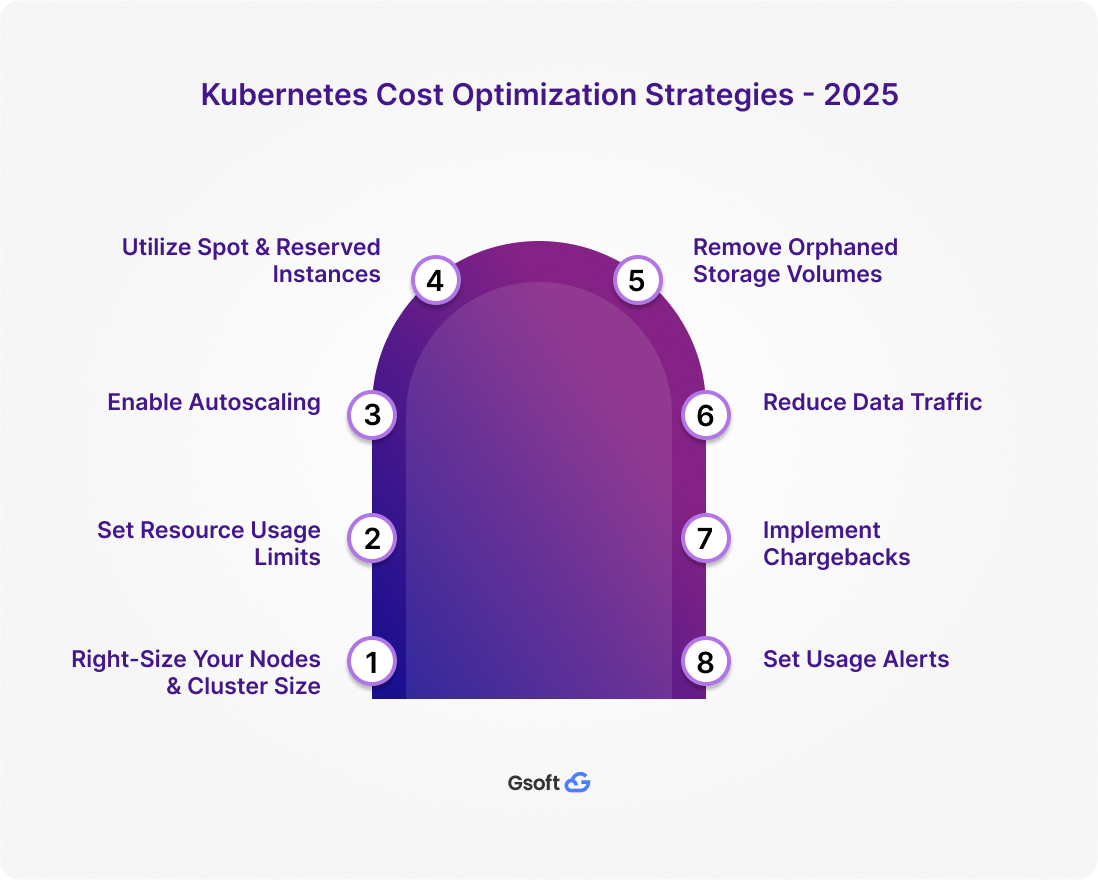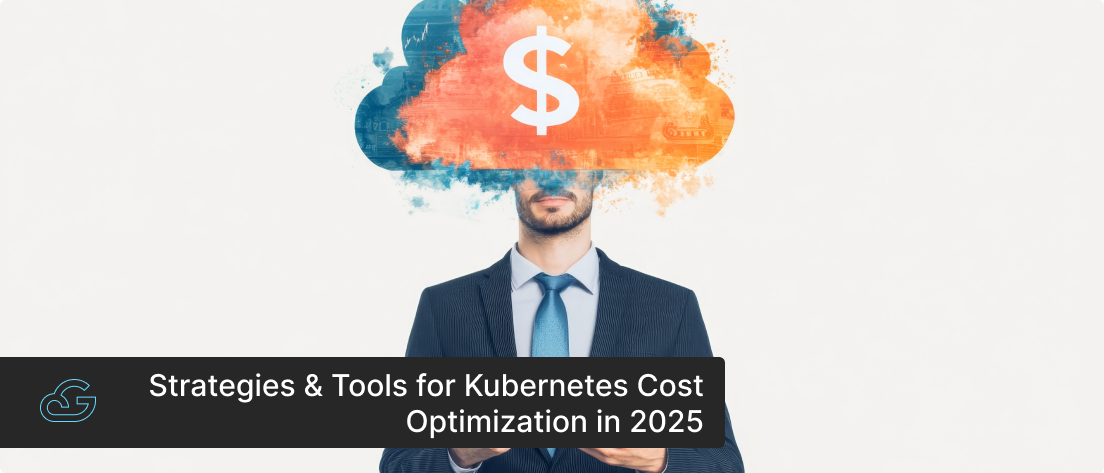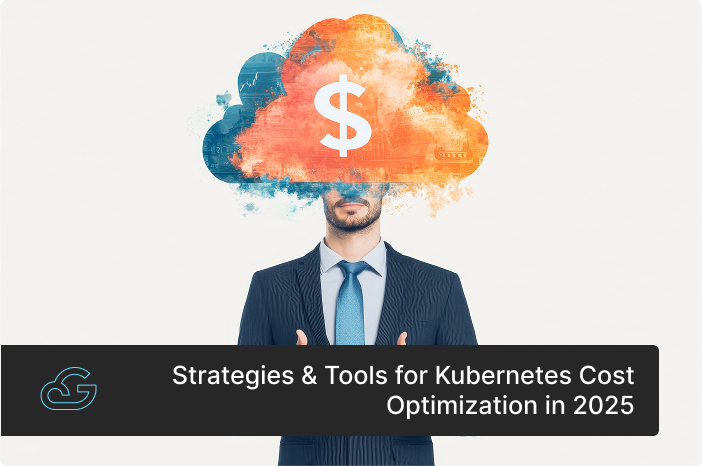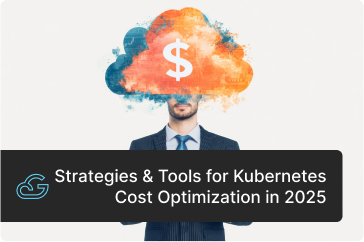Blogs / Cost Optimization
Strategies & Tools for Kubernetes Cost Optimization in 2025
By
Siju Vincent
Posted: March 20, 2025
• 8 Minutes
What is Kubernetes Cost Optimization?
Kubernetes cost optimization is a cloud FinOps process centered around implementing robust strategies to minimize the associated costs of Kubernetes usage without impacting the performance of your software applications. The essential steps in this process involve gaining a clear picture of your Kubernetes clusters, understanding cost factors, identifying areas for improvement, and selecting the right strategies.
However, before exploring various Kubernetes cost optimization strategies, it is important for you to understand how Kubernetes, an open-source container orchestration platform, creates cost overheads. So, let’s kickstart this blog post by analyzing that aspect.
Understanding Kubernetes Costs: Where Do Expenses Come From?
As you know already, Kubernetes (or K8s) is an open-source container management platform. This essentially means it’s free of cost. If you possess a fairly good level of IT knowledge, you can download the source code and configure the platform according to your organizational requirements. But this is where the “free of cost” nature of Kubernetes ends.
From this point on, what you do with this Kubernetes platform will incur costs. For instance, imagine that you are using Kubernetes for running your banking application. If you decide to deploy the platform on-prem, you must invest heavily and acquire the necessary hardware to keep the application running.
Instead, if you are planning to run it on the cloud, you don’t have to worry about hardware. But all the infrastructure you are provisioning from the cloud carries significant fees, which will be added to your Kubernetes bill. And due to some of the in-built features of Kubernetes, such as dynamic scaling, self-healing, and workload distribution, this bill can quickly escalate out of control.
In both these cases, you will have to hire new personnel with expertise and experience in managing a Kubernetes platform, especially its control plane, which again ramps up your overall costs. You can overcome this challenge by opting for managed Kubernetes services like Azure Kubernetes Service (AKS), Amazon Elastic Kubernetes Service (EKS), and Google Kubernetes Engine (GKE). However, you will have to pay a flat fee based on the number of clusters or nodes required to obtain these hosted services, which will vary according to the cloud provider.
That pretty much sums up how a Kubernetes platform creates cost overheads. However, this is purely from an operational point of view. To understand the true cost of Kubernetes, you must also analyze technical cost factors and their impact on your final Kubernetes bill. Here is a breakdown of the key cost factors:
- Computing Power: In a Kubernetes cluster, the computing power (CPU, GPU, memory, etc.) required for running your containerized applications comes from the nodes or virtual machines. As your workload evolves and becomes more resource-intensive, you will have to assign more nodes or use nodes with advanced configurations, which increases your overall Kubernetes costs.
-
Storage Volumes:
Storage volumes are vital for your containerized applications. They preserve
session data for stateful applications, maintain consistent backups, and
much more. In Kubernetes clusters, all these functions are enabled through
Persistent Volumes (PVs). They are highly resilient and remain available
even if pods suddenly shut down, undergo healing procedures, and migrate
between nodes.
Kubernetes supports different types of persistent storage, such as block storage (AWS EBS, Azure Disks), file storage (NFS, Azure Files), and object storage (AWS S3, Google Cloud Storage). The choice of storage, its performance characteristics, and the amount of data stored have a direct impact on your overall Kubernetes costs. For example, high-performance SSD-backed block storage or managed cloud storage solutions like Azure Disk or AWS EBS will cost significantly more than standard HDDs.
- Network Traffic: Data transfer within clusters and to external environments will generate substantial data egress and ingress charges. These charges will accumulate over time, snowballing into a huge figure. Additionally, the load balancers and ingress controllers that are used to expose software applications also come with additional costs, which will be attributed to Kubernetes expenses.
- Monitoring & Logging: Kubernetes platform comes with built-in features for monitoring and logging,. but, they are designed for basic workloads and simply cannot handle the demands of mission-critical applications. In this scenario, you don’t have any other option than integrating third-party monitoring and logging solutions. Even though this can ensure consistent performance and improve security coverage, the cost of these third-party solutions is typically added to your overall Kubernetes expenditure.
Now that we have covered the key Kubernetes cost factors, it might seem like controlling them is straightforward. However, Kubernetes is inherently dynamic, and without proper oversight, costs can escalate rapidly. Let’s break down the primary reasons why Kubernetes expenses can spiral out of control.
Why Kubernetes Costs are Difficult to Manage
- Dynamic Scaling: One of the biggest benefits of Kubernetes applications is the ability to rapidly scale up based on the workload demands. But looking at it from a cost perspective, you can clearly see that it can backfire as well. If you have not added any resource usage limits or thresholds, your applications will keep spinning up new virtual machines or provision additional storage volumes to tackle the increasing demand. As this continues, it becomes extremely difficult to control your overall Kubernetes costs.
- Multi-Tenancy: In a multi-tenant Kubernetes environment, multiple teams, applications, or business units share the same cluster. This makes it difficult to track who is using how much CPU, memory, or storage, leading to unexpected costs. Additionally, multiple stakeholders access and modify this environment to make adjustments in configurations or resource allocations. This dynamic and interconnected nature of multi-tenancy makes cost tracking, resource allocation, and overall cost control in Kubernetes highly challenging.
- Limited Visibility: Kubernetes applications can quickly become a technological labyrinth. As your application grows and new features get added, the number of clusters, nodes, pods, and containers also starts increasing exponentially. Furthermore, Kubernetes deployments often span multiple cloud providers or hybrid environments, adding another layer of complexity. Without proper monitoring and logging tools, maintaining granular visibility into resource usage becomes difficult, making cost management nearly impossible.
Why Kubernetes Cost Optimization Matters?
Kubernetes cost optimization can bring numerous benefits to your organization. It enables you to deploy applications in a fast and cost-effective manner while promoting financial accountability and transparency.
Here are the major benefits of Kubernetes cost optimization:
- Streamlines resource provisioning based on evolving demands
- Provides granular visibility into your expenses
- Improves your budget allocation and forecasting
- Helps you eliminate underutilized and overprovisioned resources
- Enables you to maintain optimal performance without overspending
Proven Strategies for Kubernetes Cost Optimization in 2025

- Right-Size Your Nodes & Cluster Size: Rightsizing in Kubernetes involves periodically adjusting nodes or cluster size based on your actual resource usage. What usually happens is that you tend to allocate more nodes (or VMs) or assign high-performance nodes, leading to unnecessary costs. To avoid this scenario, you must regularly examine your workloads, study their historical usage patterns, and assess how much computing power they are consuming. With these insights, you can optimize node configurations and eliminate wasteful spending.
- Set Resource Usage Limits: Kubernetes applications can scale up rapidly and automatically. If left unchecked, this can lead to excessive scaling, significantly increasing your Kubernetes costs. By defining resource usage limits, you can prevent this from happening. These limits ensure that your application does not exceed predefined thresholds, keeping resource consumption under control.
-
Enable Autoscaling:
Autoscaling is a key functionality of the Kubernetes platform. It ensures
that resources are dynamically adjusted to prevent both over-provisioning
and under-provisioning. Kubernetes supports three types of autoscaling:
- Cluster autoscaling: Automatically increases or decreases the number of nodes in a cluster based on demand.
- Horizontal Pod Autoscaling (HPA): Adjusts the number of pod replicas in response to real-time demand.
- Vertical Pod Autoscaling (VPA): Dynamically modifies the CPU and memory allocated to individual pods based on actual usage.
- Utilize Spot & Reserved Instances: All major cloud service providers offer spot and reserved instances, and using them can bring down your Kubernetes costs substantially. Spot instances are unused cloud resources that are auctioned at lower prices and are available for a short duration. They are ideal for workloads that can tolerate interruptions, such as batch jobs, CI/CD pipelines, and background processing. On the other hand, reserved instances allow you to commit to a specific amount of capacity for a longer period (e.g., one to three years) at a discounted rate. By strategically combining these options, you can optimize costs while maintaining performance.
- Remove Orphaned Storage Volumes: Over time, Kubernetes clusters accumulate unused persistent storage volumes, often as a result of terminated pods or deleted applications. These orphaned storage volumes continue to incur costs even when they are no longer in use. Regularly auditing your storage and removing these unnecessary volumes can prevent wasteful spending. Automated policies and tools like Kubernetes’ garbage collection mechanisms or cloud provider-native tools can help in identifying and reclaiming unused storage.
- Reduce Data Traffic: Network costs in Kubernetes can add up quickly, especially if your application involves frequent data transfers between clusters, across regions, or between on-prem and cloud environments. To minimize these costs, consider strategies like deploying workloads in the same region, using internal networking options, and leveraging Kubernetes-native service meshes for optimized traffic routing. Additionally, caching and compression techniques can help reduce data transfer volumes, ultimately lowering expenses.
- Implement Chargebacks: Chargeback models enable cost accountability by associating Kubernetes resource usage with specific teams, projects, or business units. By implementing chargebacks, you can allocate costs based on actual consumption, promoting better resource utilization and financial transparency.
- Set Usage Alerts: Setting up usage alerts helps you proactively monitor and control your spending. By leveraging cloud provider billing alerts and Kubernetes monitoring tools, you can receive real-time notifications whenever resource utilization exceeds predefined thresholds. This allows you to take immediate action, such as rightsizing workloads, enforcing quotas, or scaling down unnecessary resources.
Implementing these strategies requires technical proficiency, and even with the right expertise, managing them can be complex. Fortunately, dedicated Kubernetes cost optimization tools can simplify the process. In the next section, we’ll explore some of the best tools available to help you optimize your Kubernetes environment.
Top Tools for Kubernetes Cost Optimization
- Kubecost: Kubecost is one of the most widely used cost optimization tools for Kubernetes. It can track costs across EKS, GKE, AKS, and even on-prem deployments, offering greater flexibility. Kubecost also breaks down expenses into different metrics, such as deployment, namespace, cluster, etc., which enables granular visibility. Additionally, it can also offer dynamic recommendations.
- Loft Labs: Loft is a self-service platform that can complement your Kubernetes application. It enables users to deploy and share Kubernetes clusters without having to wait for administrative approvals. It also comes with advanced features like automated namespace management, sleep mode, resource quotas, etc.
- Densify: Densify is an automated Kubernetes optimization platform that helps organizations maximize efficiency and reduce costs across AWS, Azure, and Google Cloud. Powered by AI, it continuously analyzes resource usage and provides real-time recommendations to right-size workloads, prevent over-provisioning, and optimize performance. With multi-cloud support, cost-saving insights, and detailed reporting, Densify ensures smarter cloud management and cost efficiency without compromising performance.
- CAST AI: CAST AI is a powerful Kubernetes cost optimization and automation platform that helps businesses run containerized workloads efficiently across multiple cloud providers. By leveraging machine learning, CAST AI continuously analyzes workloads and automatically optimizes them for cost efficiency without compromising performance. Key features of CAST AI include free cluster analysis, instant insights, cost transparency, real-time monitoring, and historical data retention.
- OpenCost: OpenCost is an open-source Kubernetes cost monitoring and allocation tool that provides real-time visibility into cloud infrastructure expenses. Designed for organizations running containerized applications, OpenCost helps track spending at a granular level—down to individual containers, pods, and deployments—enabling better cost control and optimization.
Take Control of Your Kubernetes Costs with Gsoft
Managing Kubernetes costs efficiently requires a strategic approach—one that balances performance, scalability, and budget optimization. With Gsoft’s managed Kubernetes services, we help businesses eliminate wasteful spending, implement best practices, and leverage automation to maximize their cloud investment.
- Expert-Led Cost Optimization: Our cloud specialists analyze your Kubernetes environment to identify inefficiencies and implement tailored cost-saving strategies.
- Seamless Automation & Scaling: We enable dynamic autoscaling and rightsizing, ensuring that your workloads get exactly the resources they need—nothing more, nothing less.
- Multi-Cloud Cost Visibility: Get detailed insights into your Kubernetes expenses across AWS, Azure, and GCP, helping you make data-driven decisions.
- Future-Proof Your Cloud Strategy: We don’t just cut costs; we align your Kubernetes infrastructure with your long-term business goals.
Take the guesswork out of Kubernetes cost management. Partner with Gsoft and gain full control over your cloud spending while maintaining top-tier performance.


Get Know More About Our Services and Products
Reach to us if you have any queries on any of our products or Services.










